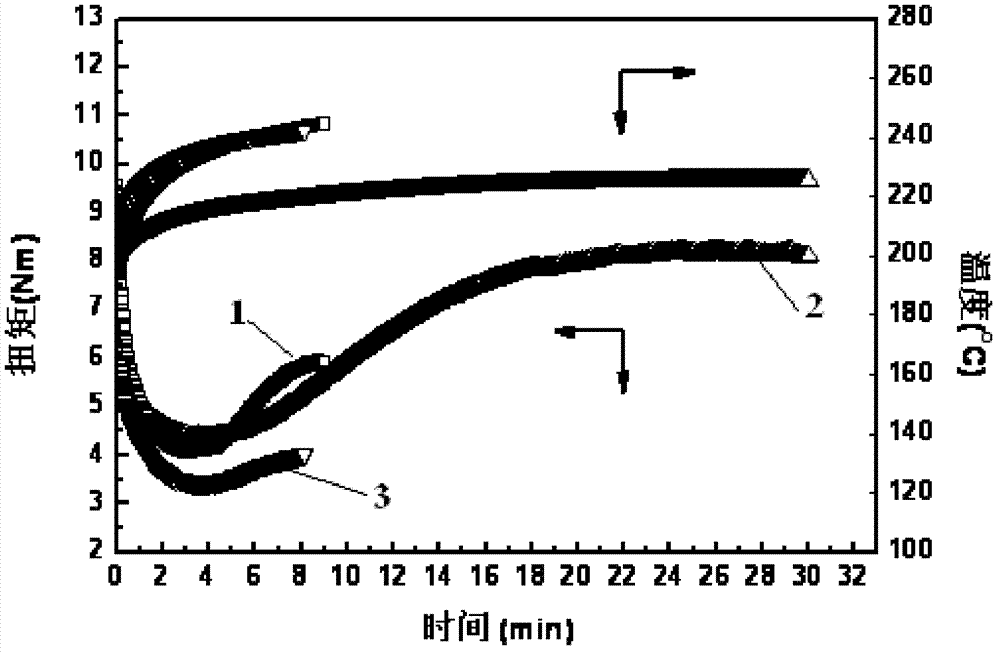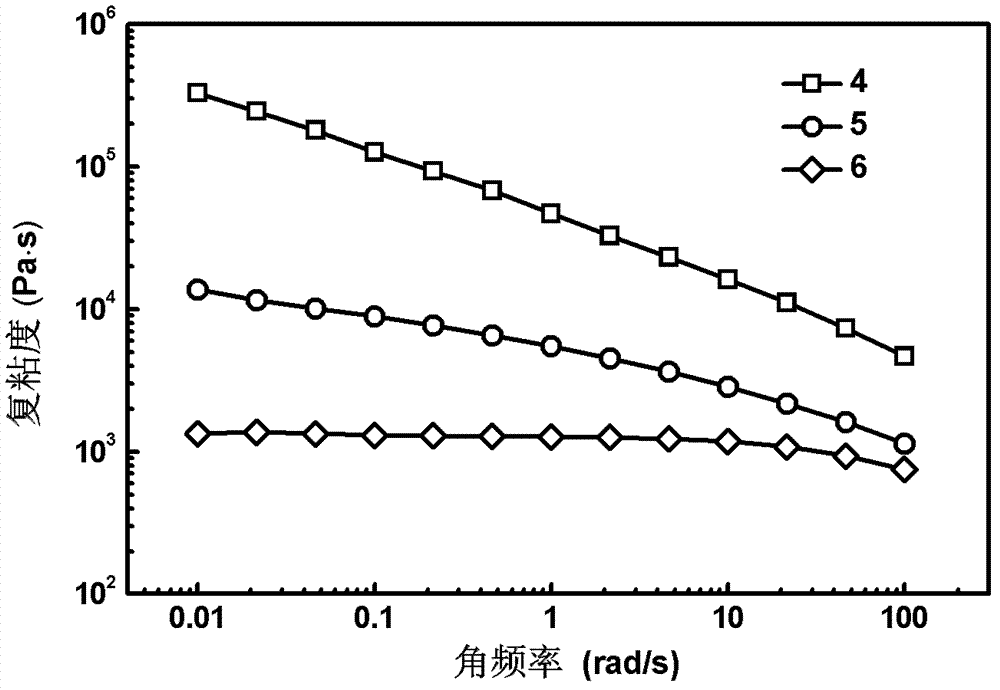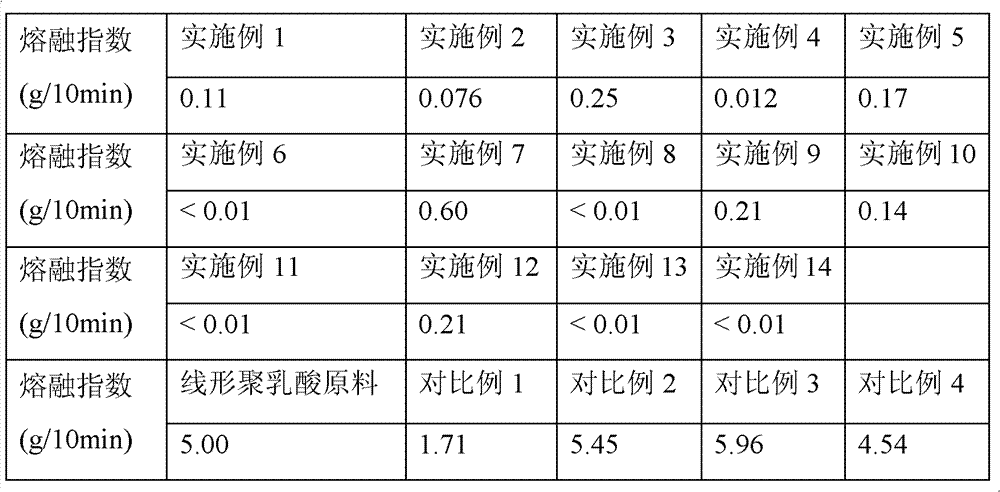Method for preparing long-chain branch polylactic acid resin by combination of two-step function group reaction and linear enantiomer polylactic acid
A technology of long-chain branched polylactic acid and polylactic acid resin, applied in the field of polymer processing, can solve the problems of difficulty in product molecular weight and branching degree, loss of long branching effect, unfavorable continuous production, etc., and is conducive to large-scale continuous production. Production, significant branching effect, high melt strength effect
- Summary
- Abstract
- Description
- Claims
- Application Information
AI Technical Summary
Problems solved by technology
Method used
Image
Examples
Embodiment 1
[0026] Synthesis of Long-chain Branched Polylactic Acid by Two-step Functional Group Reaction Combined with Linear Enantiomer Polylactic Acid
[0027] Add 100 parts by weight of linear polylactic acid resin and 5.3 parts of anti-linear enantiomer polylactic acid to an internal mixer with a rotation speed of 20 rpm at 230 ° C, and add 0.16 parts of 1,3,5-trimethyl- 2,4,6-tris(3,5-di-tert-butyl-4-hydroxybenzyl)benzene, 0.39 parts of pyromellitic dianhydride, 0.52 parts of triglycidyl isocyanuric acid, mixed 2 Minutes; then the internal mixer was raised to 100rpm, melt blending until the end of the reaction, that is, stop after about 8.5 minutes, to obtain long-chain branched polylactic acid. Table 1 shows the melt index (190° C., 2.16 kg load) of the obtained reaction product material measured according to the ASTM D1238 standard. The torque and temperature curves in the internal mixer are shown in figure 1 , at 180°C and the strain is 5% under the condition of viscosity chang...
Embodiment 2
[0029] Synthesis of Long-chain Branched Polylactic Acid by Two-step Functional Group Reaction Combined with Linear Enantiomer Polylactic Acid
[0030] Add 100 parts by weight of linear polylactic acid resin and 11.1 parts of linear enantiomer polylactic acid to an internal mixer with a rotation speed of 20 rpm at 230 ° C, and add 0.17 parts of 1,3,5-trimethyl- 2,4,6-tris(3,5-di-tert-butyl-4-hydroxybenzyl)benzene, 0.39 parts of pyromellitic dianhydride, 0.52 parts of triglycidyl isocyanuric acid, mixed 2 Minutes; then the internal mixer was raised to 100rpm, melt blending until the end of the reaction, that is, stop after about 8.5 minutes, to obtain long-chain branched polylactic acid. The melt index test results are shown in Table 1.
Embodiment 3
[0032] Synthesis of Long-chain Branched Polylactic Acid by Two-step Functional Group Reaction Combined with Linear Enantiomer Polylactic Acid
[0033] Add 100 parts by weight of linear polylactic acid resin and 5.3 parts of linear enantiomer polylactic acid to an internal mixer with a rotation speed of 20 rpm at 250 ° C, and add 0.16 parts of 1,3,5-trimethyl- 2,4,6-tris(3,5-di-tert-butyl-4-hydroxybenzyl)benzene, 0.26 parts of pyromellitic dianhydride, 0.52 parts of triglycidyl isocyanuric acid, mixed 2 Minutes; then the internal mixer was raised to 100rpm, melt blending until the end of the reaction, that is, stop after about 5.5 minutes, to obtain long-chain branched polylactic acid. The melt index test results are shown in Table 1.
PUM
| Property | Measurement | Unit |
|---|---|---|
| density | aaaaa | aaaaa |
| melt flow index | aaaaa | aaaaa |
| density | aaaaa | aaaaa |
Abstract
Description
Claims
Application Information
 Login to View More
Login to View More - R&D
- Intellectual Property
- Life Sciences
- Materials
- Tech Scout
- Unparalleled Data Quality
- Higher Quality Content
- 60% Fewer Hallucinations
Browse by: Latest US Patents, China's latest patents, Technical Efficacy Thesaurus, Application Domain, Technology Topic, Popular Technical Reports.
© 2025 PatSnap. All rights reserved.Legal|Privacy policy|Modern Slavery Act Transparency Statement|Sitemap|About US| Contact US: help@patsnap.com



